The world of the future will be organized around cooperating blocs of nations engaged in easy barter of goods and services engendered by commonly understood customs, laws and rituals. The European Union, Organization of African Unity, G8, SAARC, ASEAN are but some examples of such unions. This year the EU completed 50 years and one of the events to commemorate their anniversary was an art exhibition in Rome titled Capolavori dell’ Arte Europea (Masterpieces of European Art). The exhibition is on at the Quirinale Palace in Rome.
The stipulation was that each country in the Union send artwork that best represents the nation in relation to the Union. An exercise in which an entire nation is asked to nominate a single piece of art is one fraught with acrimony, but it is pretty amazing what the EU can actually accomplish sometimes…
The choices were intriguing.
Spain’s choice was Velázquez’s beautiful ‘View of the Garden of the Villa Medici’, while Germany went with a famed Dörer portrait (as expected). Belgium sent Van Dyck’s ‘Lamentation of Christ’. What surprised me a bit was a grid composition by Mondrian representing the Netherlands when they have stalwarts like Rembrandt. France went with Rodin’s ‘The Thinker’. Also surprising was the host Italy’s choice of a Titian when they have Leonardo da Vinci. England’s Queen personally nominated J. M. W. Turner’s ‘The Arrival of Louis-Philippe at Portsmouth, 1844’ while Malta chose to depict her rich heritage using an ancient icon of fertility. Austria decided not to play the whole historical allegory card and sent in Egon Schiele’s ‘Reclining Woman’ (actually a portrait of Edith, his wife) causing ripples around parts of Europe. Eastern Europeans sent in religious works (sort of expected). Finland sent in a hauntingly beautiful oil by Albert Edelfelt while Greece decided to show off one of their marble antiquities.
A selection of the choices are shown below. The entire listing is here.
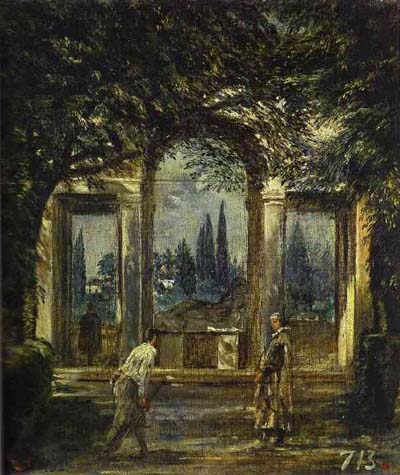 Spain : Velázquez’s View of the Garden of the Villa Medici
Spain : Velázquez’s View of the Garden of the Villa Medici
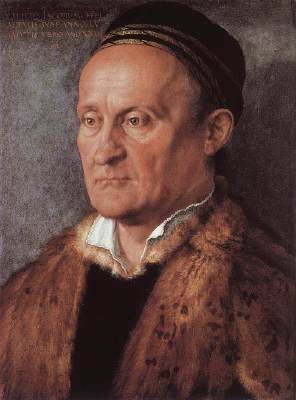 Germany Dörer’s Portrait of Jakob Muffel.
Germany Dörer’s Portrait of Jakob Muffel.
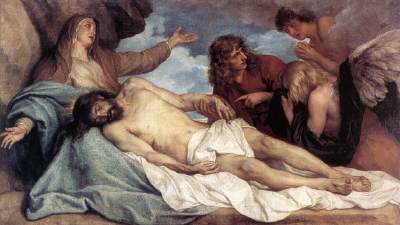 Belgium: Van Dyck’s Lamentation of Christ.
Belgium: Van Dyck’s Lamentation of Christ.
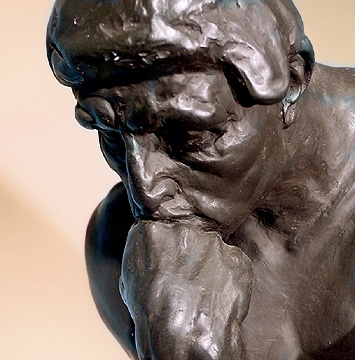 France: Rodin’s The Thinker.
France: Rodin’s The Thinker.
 Netherlands: Piet Mondriaan Composition with grill 3: composition to losanga
Netherlands: Piet Mondriaan Composition with grill 3: composition to losanga
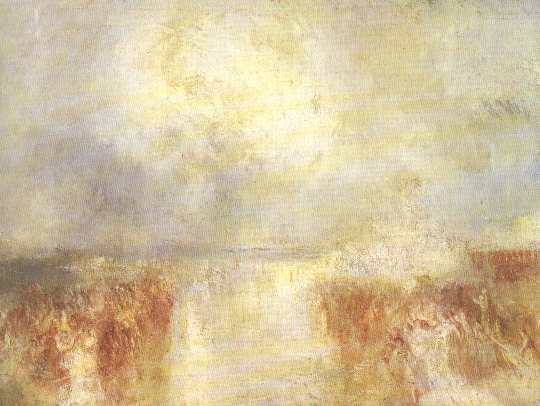 England: J. M. W. Turner’s The Arrival of Louis-Philippe at Portsmouth, 1844
England: J. M. W. Turner’s The Arrival of Louis-Philippe at Portsmouth, 1844
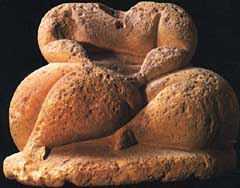 Malta: Fat Lady, circa 2500 BC
Malta: Fat Lady, circa 2500 BC
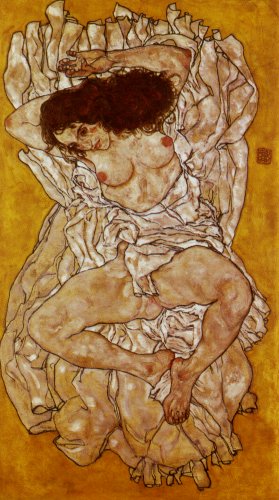 Austria: Egon Schiele’s Reclining Woman
Austria: Egon Schiele’s Reclining Woman
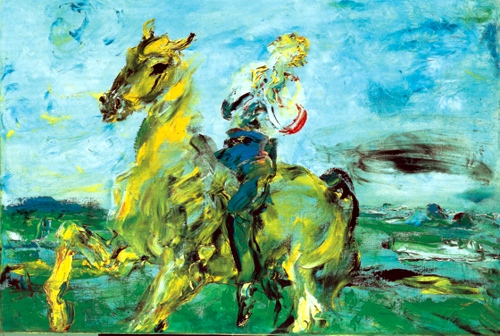 Ireland: Jack Butler Yeats’ The knight who sings
Ireland: Jack Butler Yeats’ The knight who sings
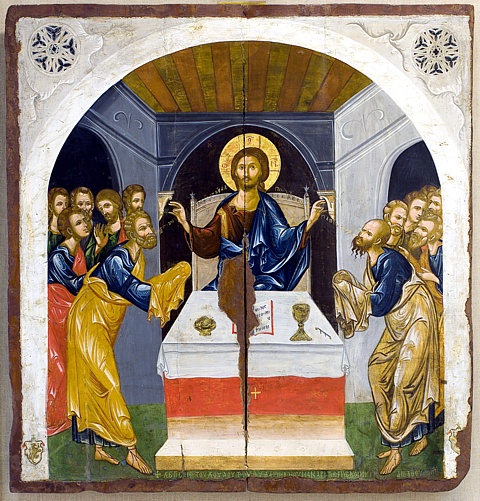 Cyprus: Communion of the Apostles, Circa 15th century
Cyprus: Communion of the Apostles, Circa 15th century
This prompted me to ponder on the following…
If we in the United States were asked to name three US artists and one of their works for an international event like the one described above, who would be your choices?
My choices would be Chuck Close (Lucas), Georgia O’Keefe (Red Canna) and Winslow Homer (Breezing Up a.k.a. A Fair Wind).

Great post! My favorite painting, shown in the link, is the Hungarian (Ungheria) Cedro solitario, 1907.
Interesting concept, and I like your choices, Sunil. But I feel a more distinctively American contribution would perhaps be one of the Abstract Expressionists who were certainly built up as artistic representatives after WW2. I’ve also always had a soft spot for Alexander Calder’s sculptures. But my general knowledge of both art history and the contemporary art scene is fairly meager.
Great post, Sunil,
A lot to ponder on.
I might choose Hopper. And an Ab Ex, maybe Frankenthaler (2nd generation). And perhaps Faith Ringold. Certainly you can’t go wrong with Chuck Close. And I’m reading about Robert Irwin and so very tempted….
Definitely Hopper!
June, are you reading “Seeing is forgetting the name …”? I am, and really enjoying it. David suggested it a while back. Hopper is a good suggestion, seems very American.
How about Johns or Rauschenburg? THey both seem to represent a transition from Abstract Expressionism to Pop (2 very American movements) and JOhns has those American flags. Can’t get more American than that!
Good question, Sunil
My favorite American painter was Sargent. But he was virtually an expat. Except for his Boston murals there’s not much distinctly American in his work (a lot of what I like about him).
But there are many Wyeths that serve.
Steve,
yes, I am reading the Wechsler, “Seeing is forgetting the what You See” (or some title like that). I am grateful to David for suggesting it. It took me a while to get thoroughly into it, but as I am now also investigating Cezanne’s work with the picture frame, it’s absolutely appropriate — two ends of the spectrum as it were. And the further I’ve read, the more fascinating Irvin’s “research” becomes.
Birgit,
Yes the Hungarian piece is also very nice. I think it is a great collection all around and if there was any way to visit this historic event, I would have done so… Any sponsors for plane tickets?
Steve,
I debated a lot if I need to include an abstract expressionist in my choices but decided against it – I guess because the movement is only about 50 years old at this point… Of course Chuck Close is immortal.
June,
Yes, Hopper is quintessentially American. I remember presenting my current boss with a calendar of Hopper paintings early this year and it has been a constant source of joy for both of us…
Leslie,
Yes it could not get more apple pie than Johns. You are right about the flags. About Rauschenburg – I am not so sure.
Rex,
John Singer Sargent was a great painter. I debated this, but like you point out the majority of his oeuvre was outside America. I still remember the long time I took to ponder over his monumental piece of Madame Gautreau at the Met last year.
Ruscha
D,
Isn’t Ruscha a little too pop and ‘west coasty’ for the mainstream? Just my view…
Sunil,
Sure he is a little Pop and from the West Coast, but his work, to me, speaks volumes about American Culture Today. Why be so retrospective?
D,
Yes, I should not be so retrospective – but again this opens up the groundswell of highbrow versus lowbrow / fine art versus pop art debate that I do not want to touch…
Sunil,
I do not understand?
The view that pop art or ‘everyday culture’ art is so recent and the themes/subjects it tackles have not had too much time to mature (for us to completely judge its long terms effects and its future perceptions/ripples for/to society) hence, it being not completely representative of American painting (which was the question in this post)…
Sunil,
I hope you don’t wait too long.
Thanks again for posting some of the entries for the European Union exhibit at the Quirinale in Rome, to celebrate the 50th anniversary of the Treaty of Rome!
My favorite painting is Anthony van Dyck’s painting, The Lamentation, from Flanders in Belgium. Anthony van Dyck was a revered baroque painter from Antwerp, Belgium, who went on to live in England, where he became court painter to Charles I and the founding father of English portraiture (Gainsborough, Reynolds, Romney, and even John Singer Sargent were all influenced by him). But van Dyck also had an enormous influence in Holland (Rembrandt and other Dutch artists in Holland admired him greatly) as well as in Italy, so it’s only fitting that van Dyck was sent to Rome to represent Flanders. Van Dyck’s painting, The Lamentation, is full of mysticism and the colors are just magnificent; the fabulous blue sky creates an unusual sense of depth and no one but van Dyck could paint such a moving and believable mourning angel. I want to encourage everyone to check out the image on the Quirinale’s site. Here it is:
http://www.romeguide.it/mostre/capolavoriarteeuropea/gr_Belgio.jpg
If you like Anthony van Dyck, you may also like other artists from the tiny nation of Flanders in Northern Belgium, main cities Antwerp, Brugge (Bruges), Ghent. They include Jan van Eyck, Rogier van der Weyden, Hieronymus Bosch, Robert Campin, Hugo van der Goes,Hans Memling, the brothers Limburg, Gerard David, Peter Paul Rubens and Jacob Jordaens, and others, too many to list.
More information here in an online article on Flemish art from Tiscali:
http://www.tiscali.co.uk/reference/encyclopaedia/hutchinson/m0001335.html
All best, Antonia
Antonia,
I am glad you liked the post on the EU exhibition. Most of the Flemish artists that you have mentioned are some of my favorites – in particular I find Bosch my favorite (every once in a while when I am bored, I pore over the minutiae of his paintings finding out new nuances). I have also studied Memling’s portraits seriously and I draw a lot of inspiration from them in my own illustrations.
Thanks also for pointing out the influence between the masters of English portraiture and Anthony van Dyck – I did not realize it…
Overall, the art works chosen for the EU celebration aren’t very original choices but most are very nice. If I was lucky enough to choose three works to represent America, I’d choose a work by Copley, preferably the portrait of his half-brother with the squirrel; a work that represents the Westward push of the 19th century, maybe by one of the Hudson River School artists; and DeKooning’s Excavation.
OK…DeKooning was Dutch but…you know…
Tree,
Could you explain why you would choose Excavation? To someone like myself with meager art history knowledge? I like it and it’s interesting to see an affinity with Pollock which I don’t recognize in other de Kooning work, but I’d like to know more about its significance.
Sunil:
If the stipulation is a connection to the Union, then I’m going to throw in for De Kooning, that Dutchman.
Hi Steve, I chose Excavation because DeKooning exposed while at the same time surpassed the Modern masters in this work. Look closely and you see the lines of Ingres, Mondrian, and others which have been dissected by Dekooning. It was a major step forward for him, a letting go of past influences and it points towards a new future. Hmmm…hope that doesn’t come off too corny! LOL It all may be a bit too self conscious, but I think it’s a great work.
I gained an appreciation for the work after reading the DeKooning biography by Stevens and Swan.
By the way, choosing just three works is really hard!
Tree,
Thanks, that will really help me in looking at the de Kooning, as soon as I get hold of a good reproduction of it. I’ll look up the bio you mentioned, too. I’m slowly learning more about painting of this period, and de Kooning seems to be growing on me.
Sunil:
Not a problem. I was glad to provide the information about Anthony van Dyck’s influence on the British school of portraiture. But as mentioned, also the American painter John Singer Sargent was heavily influenced by the Flemish painter. As soon as I have more time, I will add a few references to books that particularly address van Dyck’s significance for Anglo-American art.
Here’s a nice link, in the meantime:
http://en.wikipedia.org/wiki/Image:Anthonyvandyckselfportrait.jpeg
All the best, Antonia